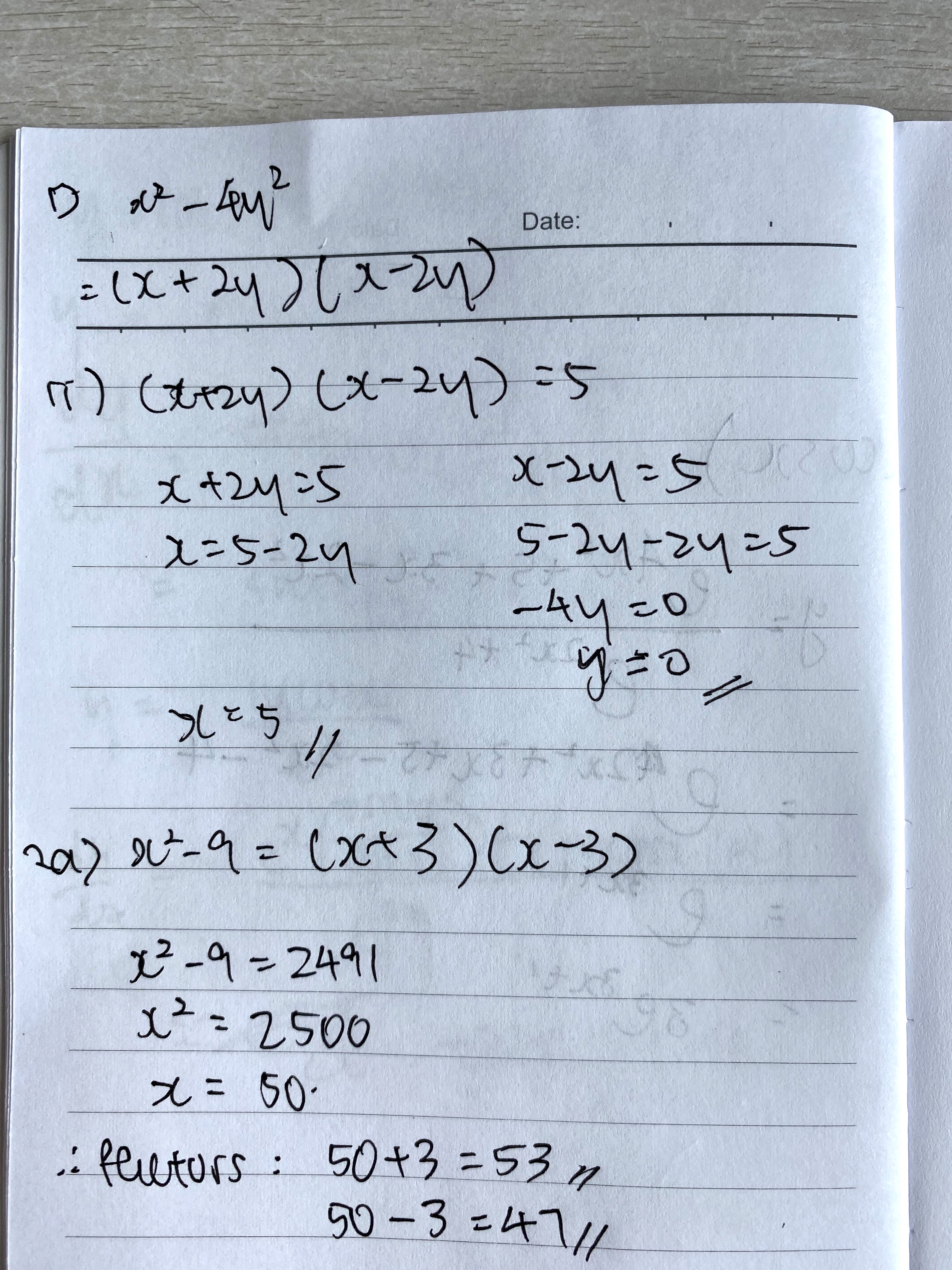Ting Xuan's answer to Kkk's Secondary 2 Maths Singapore question.
Second part is incorrect.
If x = 5 and y = 0, then
(x + 2y) (x - 2y) = (5 + 0) (5 - 0) = 25 and not 5.
Correct is this.
(x + 2y) (x - 2y) = 5 and each of the variables x and y are positive integers
Since 5 only has 1 and 5 as its factors (along with the negative versions -1 and -5), then four scenarios can happen. Unfortunately, the cases involving -1 and -5 must be rejected because the sum of two positive numbers x and 2y must also be positive.
So, we narrow this down to two cases.
Case 1,
x + 2y = 5
x - 2y = 1
Adding both equations together,
x + 2y + x - 2y = 5 + 1
2x = 6
x = 3
Then,
3 + 2y = 5
2y = 2
y = 1
Case 2,
x + 2y = 1
x - 2y = 5
This should be rejected as subtracting a positive value from x should get us a lower value, but 5 is greater than 1; this indicates that y is negative.
So, the only possible solution is the solution x = 3, y = 1.
If x = 5 and y = 0, then
(x + 2y) (x - 2y) = (5 + 0) (5 - 0) = 25 and not 5.
Correct is this.
(x + 2y) (x - 2y) = 5 and each of the variables x and y are positive integers
Since 5 only has 1 and 5 as its factors (along with the negative versions -1 and -5), then four scenarios can happen. Unfortunately, the cases involving -1 and -5 must be rejected because the sum of two positive numbers x and 2y must also be positive.
So, we narrow this down to two cases.
Case 1,
x + 2y = 5
x - 2y = 1
Adding both equations together,
x + 2y + x - 2y = 5 + 1
2x = 6
x = 3
Then,
3 + 2y = 5
2y = 2
y = 1
Case 2,
x + 2y = 1
x - 2y = 5
This should be rejected as subtracting a positive value from x should get us a lower value, but 5 is greater than 1; this indicates that y is negative.
So, the only possible solution is the solution x = 3, y = 1.
Kkk and Ting Xuan, do take note that for quadratic equations of the form
(x + a) (x + b) = 0
we can say that x + a = 0 or x + b = 0, but for quadratic equations of the form
(x + a) (x + b) = k
where k is a non-zero constant, we cannot say that x + a = k or x + b = k.
(x + a) (x + b) = 0
we can say that x + a = 0 or x + b = 0, but for quadratic equations of the form
(x + a) (x + b) = k
where k is a non-zero constant, we cannot say that x + a = k or x + b = k.



